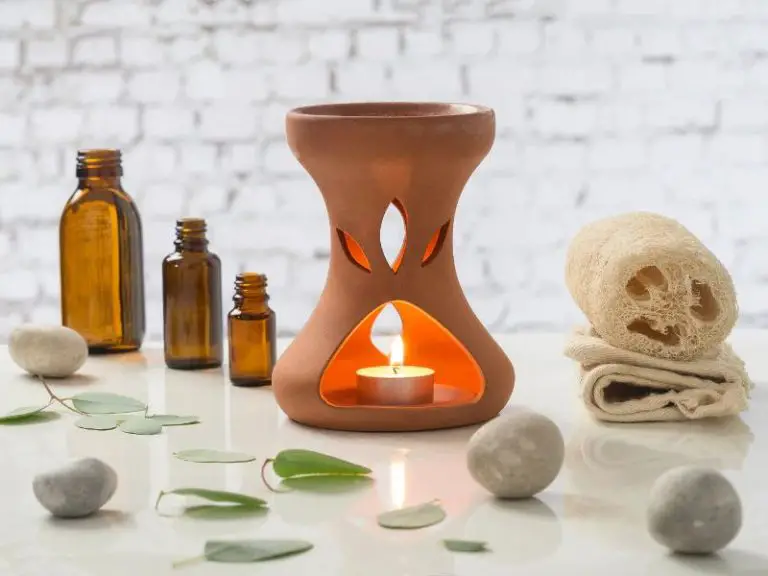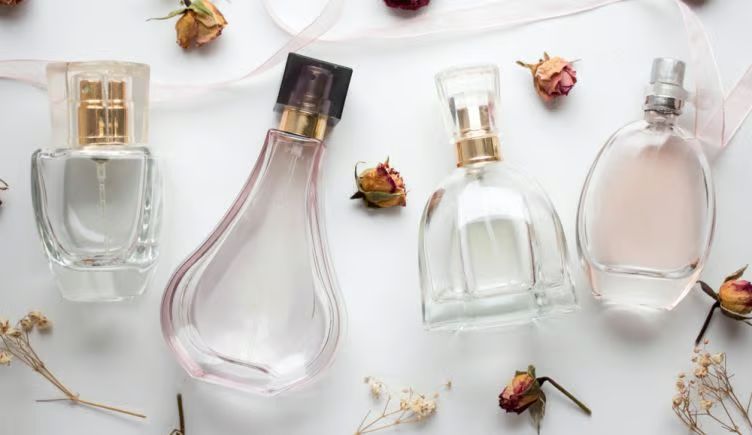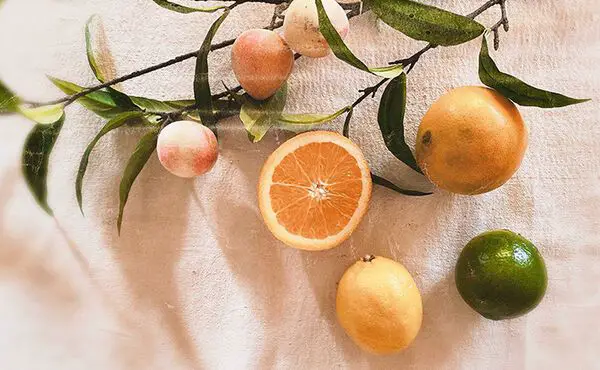What Essential Oils Are Used As Fragrances?
Essential oils are concentrated hydrophobic liquids containing volatile chemical compounds from plants. They are extracted from flowers, buds, seeds, leaves, stems, bark, herbs, woods, fruits and roots through distillation, expression, solvent extraction, absolute oil extraction, resin tapping, and cold pressing
Essential oils have been used for centuries in perfumery, cosmetics, food and beverage flavoring, and aromatherapy treatments. They provide an alternative to synthetic chemical compounds and isolates used in fragrances.
Essential oils allow perfumers and consumers to enjoy more natural scented products. Their extraction methods aim to capture the “essence” of the plant’s fragrance and flavor profile. With hundreds of essential oils to choose from, there are myriad options for crafting unique, high quality fragrances.
History
The use of essential oils in perfumery dates back thousands of years. The ancient Egyptians were among the first to incorporate essential oils into perfumes, using ingredients such as frankincense, myrrh, galbanum, cinnamon, and pine oils (https://www.purodem.com/the-history-of-aromatherapy/). The ancient Greeks and Romans also used essential oils extensively in their perfumes, baths, and aromatherapy practices.
During the Middle Ages, the Persians further advanced the art of perfumery by developing the technique of distilling essential oils from flowers. Rose water was among the first distillations, and aromatic floral waters remain an important perfumery product today. The Arabs were instrumental in spreading the knowledge and use of essential oil distillation throughout Europe and Asia during this time.
Modern essential oil production is often traced back to the 16th-17th centuries in Europe. Advancements in chemistry allowed for more efficient extraction and distillation techniques. Key developments included steam distillation and the isolation of compounds such as menthol from peppermint oil in the 1800s. The modern aromatherapy movement began in the 1920s when French chemist Rene-Maurice Gattefossé discovered the skin-healing properties of lavender oil (https://www.edenbotanicals.com/aromatherapy-a-brief-history). This renewed interest in medicinal uses that continues today.
Throughout history, popular essential oils used in perfumery have included rose, orange blossom, jasmine, tuberose, sandalwood, vetiver, frankincense, clove, cinnamon and more. Many classical fragrances feature these historical essential oil ingredients.
Extraction Methods
There are several methods used to extract essential oils from plant materials. The most common methods include:
Distillation – This involves using steam to separate the aromatic compounds from the plant material. The steam forces the essential oils out of the plant and then condenses back to liquid, separating from the water. Steam distillation is the most popular method for fragile materials like flowers and leaves.
Cold pressing – This method uses pressure to squeeze the aromatic oils out of citrus fruit peels. Oils extracted this way are called expression oils. Cold pressing produces oils with brighter, fresher aromas.
Solvent extraction – This uses solvents like hexane or ethanol to dissolve and extract essential oils from plant material. The solvent is later evaporated, leaving behind the concentrated oil. Solvent extraction is commonly used for materials like gums and resins that don’t release their aroma easily.
CO2 extraction – This method uses carbon dioxide in its supercritical state to carry the aromatic compounds. It produces highly concentrated extracts and can be used on a wide variety of plant materials. CO2 extraction is considered one of the best methods, but requires specialized equipment.
Most Popular Oils
When it comes to essential oils used in fragrances, there are several that stand out as the most popular. These oils are commonly used by perfumers to create distinctive scents across a variety of fragrance families. Some of the most popular essential oils used in fragrances include:
Lavender – With its fresh, floral scent, lavender oil is one of the most versatile and commonly used oils in fragrances. It blends well with many other oils and is especially popular in floral and oriental fragrance families.1
Bergamot – Known for its bright, citrusy aroma, bergamot is a top note commonly used in mens fragrances. It helps uplift and enliven a fragrance blend.2
Jasmine – Jasmine essential oil has an exotic, rich floral scent that is widely used in women’s perfumes. It is especially common in floral fragrances.
Rose – With its classic floral rose scent, rose oil is an elegant and precious ingredient in many fragrances. It is used across floral, oriental, and woody fragrance families.
Clary sage – Clary sage has an herbal, sweet aroma that blends well with floral notes like lavender. It is commonly found in women’s fragrances.
Citrus oils – Oils like lemon, orange, grapefruit, and lime provide fresh, bright scents and are popular top notes. They help lift the aroma of a fragrance.
Fragrance Families
Essential oils belong to different fragrance families based on their scent notes. The most popular families include:
Floral – Floral essential oils like rose, jasmine, and ylang ylang have rich, sweet scents reminiscent of flowers. They are considered middle notes and are comforting.
Oriental – Oriental oils like patchouli, amber and sandalwood have a warm, slightly spicy scent. They are base notes that add depth to a fragrance.
Woody – Woody essential oils like cedarwood and pine have an earthy, forest-like aroma. They serve as base notes that ground a fragrance.
Fresh – Fresh or citrus oils like lemon, orange and grapefruit have bright, energizing scents. They are usually top notes that make an immediate impression.
Fougère – Fougère oils like lavender, coumarin and sage have herbaceous green scents. They provide the core structure of a men’s fragrance.
Blending
The art of blending essential oils to create fragrance involves combining scents that complement each other. The goal is to achieve a balanced, harmonious aroma through layered notes that unfold as the scent develops over time. The standard perfume structure combines top, middle and base notes in specific proportions.
Top notes provide the initial scent impression with light, fresh aromas like citrus, herbs or floral oils. These notes evaporate quickly. Common top note oils include lemon, bergamot, lime, basil, lavender and rose. Top notes typically comprise 20-30% of a blend.
Middle or heart notes emerge after the top notes fade. These form the main body of a fragrance and tend to be richer, rounder scents like jasmine, geranium, ylang ylang or clary sage. Middle notes make up 40-60% of a blend.
Finally, base notes ground the perfume with their depth, subtlety and persistence. Base note oils like sandalwood, vetiver, patchouli, vanilla and cedarwood linger the longest. Base notes account for 10-30% of the formula.
Thoughtful blending creates synergy, where the unified scent becomes greater than the sum of its individual ingredients. Mastering the art involves understanding how oils interact and complement each other when combined.
As Labaroma notes, a good essential oil perfume recipe generally follows a ratio of 30% top notes, 50% middle or heart notes, and 20% base notes. However, creativity and personal preference allow for endless variations.
Safety
When using essential oils, it’s important to be aware of potential safety issues and take proper precautions. Some key risks to keep in mind are skin sensitization and phototoxicity.
Many essential oils can cause skin irritation or allergic reactions in some individuals, especially when used undiluted. Some of the most common sensitizing oils include cinnamon, lemongrass, citrus oils like lemon and lime, ylang ylang, tea tree, peppermint, and clove bud. Always do a skin patch test before widespread use of an unfamiliar oil. Dilute oils properly in a carrier oil or lotion base, and avoid getting undiluted oils on the skin.
Some citrus oils like bergamot contain compounds called furocoumarins that can cause photosensitivity and increase the risk of sunburn when exposed to UV light. Avoid applying these oils before sun exposure, and take care if spending time outdoors after use. Other phototoxic oils include angelica root, lime, grapefruit, and mandarin.
When using any essential oil, be sure to read and follow all safety precautions provided by the manufacturer. Store oils properly away from sunlight and flame. Use small amounts diluted for topical applications, and avoid ingesting oils unless specifically approved as food-grade. Children and pregnant women may need to take extra care with essential oil use. Following basic safety guidelines helps ensure you can enjoy aroma therapeutic benefits while minimizing risks (Source 1, Source 2).
Sustainability
Sustainability is an important consideration when sourcing essential oils for use in fragrances. Many consumers want assurances that ingredients are ethically and responsibly sourced in ways that support local economies and minimize environmental impact.
Certain essential oil companies make sustainability a priority by using organic farming methods and ethical wild-harvesting practices. For example, Edens Garden obtains some oils from plants grown without pesticides, herbicides or chemical fertilizers on certified organic farms (https://www.edensgarden.com/collections/perfume). Others like rose, frankincense and sandalwood are ethically wild-harvested in ways meant to protect plant species and support local communities.
In contrast to synthetic fragrances derived from petrochemicals, essential oils are biodegradable and regenerative when sourced responsibly. Small batch distillation and ethical growing practices help minimize ecological footprints. However, overharvesting plants or using chemical solvents can damage environments and economies if proper care isn’t taken.
Consumers concerned about sustainability should look for oils that are organic, wild-harvested, fair trade certified, or come from reputable sustainable sources. With care and stewardship, essential oils offer an alternative to synthetic scents derived from non-renewable resources.
Regulations
The use of essential oils in fragrances is regulated by various organizations and government agencies. The International Fragrance Association (IFRA) establishes safety standards and guidelines for the safe use of fragrance materials, including essential oils. According to the IFRA Standards, “For four decades, the IFRA Standards have set the boundaries for fragrance creation – ensuring that people can enjoy the art of perfumery with confidence.” IFRA has established standards for over 3,000 fragrance ingredients.
In the United States, fragrances and fragranced cosmetics are regulated by the Food and Drug Administration (FDA) under the Federal Food, Drug, and Cosmetic Act. The FDA requires cosmetics to have proper ingredient labeling, but fragrance formulas are considered trade secrets and do not have to be disclosed in full. According to the FDA, “Because of the trade secret status, the identity of the individual components of fragrance mixtures is not included on cosmetic labels.”
The EPA also regulates essential oils and fragrances under the Toxic Substances Control Act. Overall, while the fragrance industry is largely self-regulated, organizations like IFRA and government agencies strive to establish safety standards and transparency for consumers.
Future Outlook
The future of essential oil fragrances is trending towards more natural, organic, and sustainable options. Consumers are increasingly looking for fragrances made from plant-based ingredients that are ethically sourced and environmentally friendly.1
Organic and wildcrafted essential oils are expected to grow in popularity as more consumers want completely natural fragrances free of pesticides and herbicides. There will also be greater demand for essential oils sourced through fair trade practices that ensure ethical working conditions and fair prices for farmers and harvesters.2
Sustainability is another key trend, with more brands seeking renewable, eco-friendly extraction methods and recycled or biodegradable packaging. Consumers want reassurance that their fragrance choices aren’t harming the environment or depleting natural resources.
Overall, the essential oil fragrance industry will need to adapt to meet consumer demand for total transparency about sourcing, ethics, and sustainability. Brands embracing greener, more natural fragrances have an opportunity to capture growing market share in the future.



